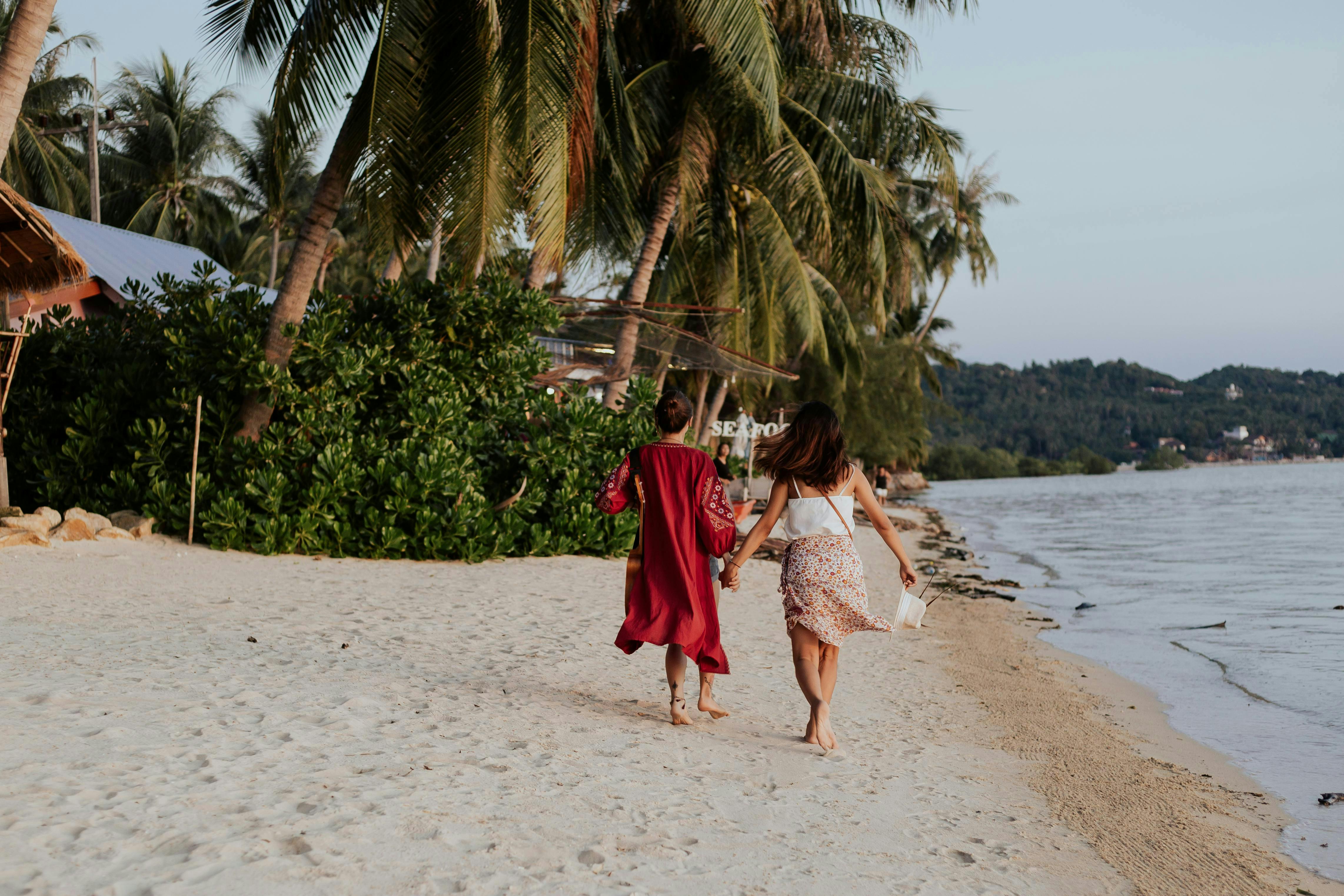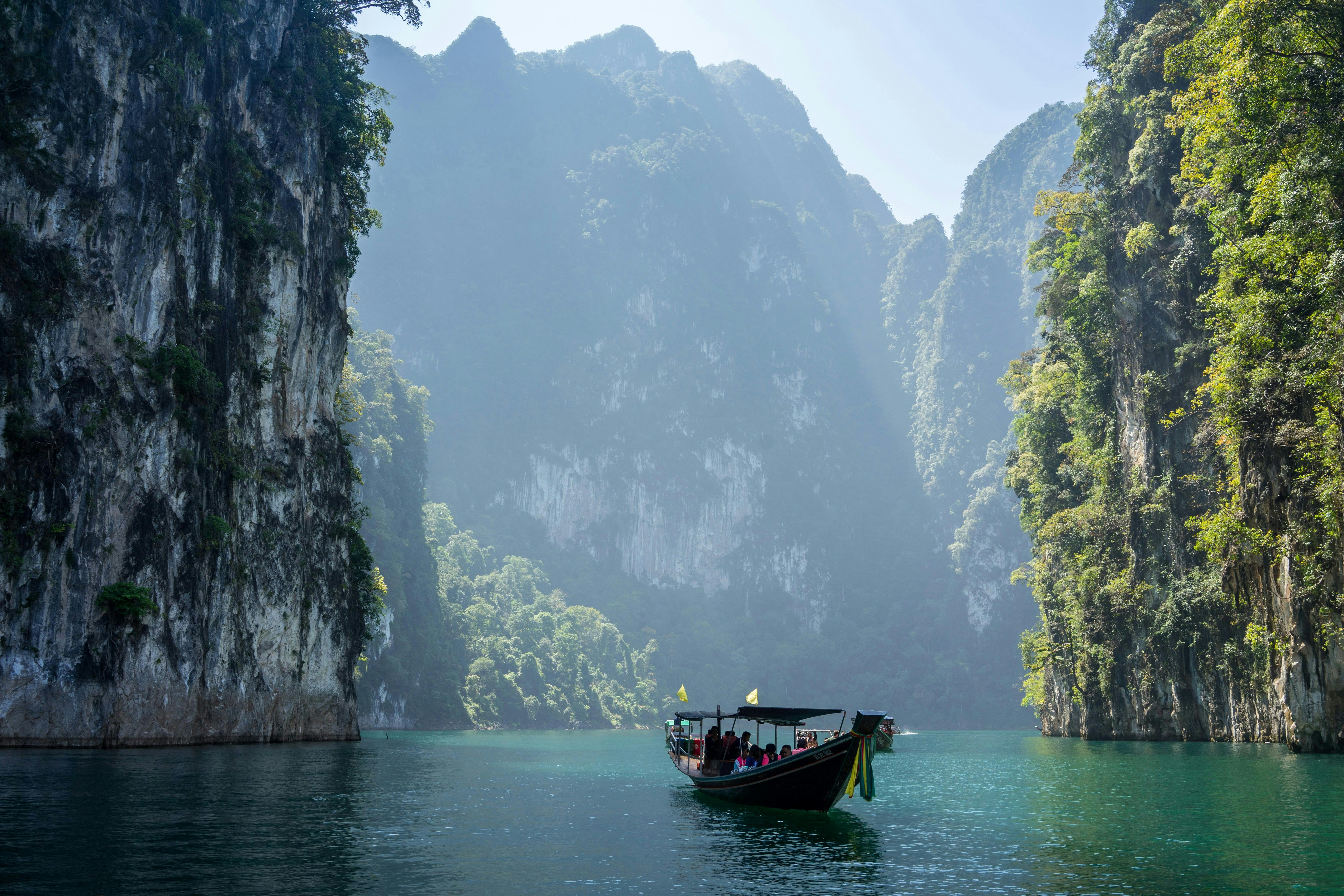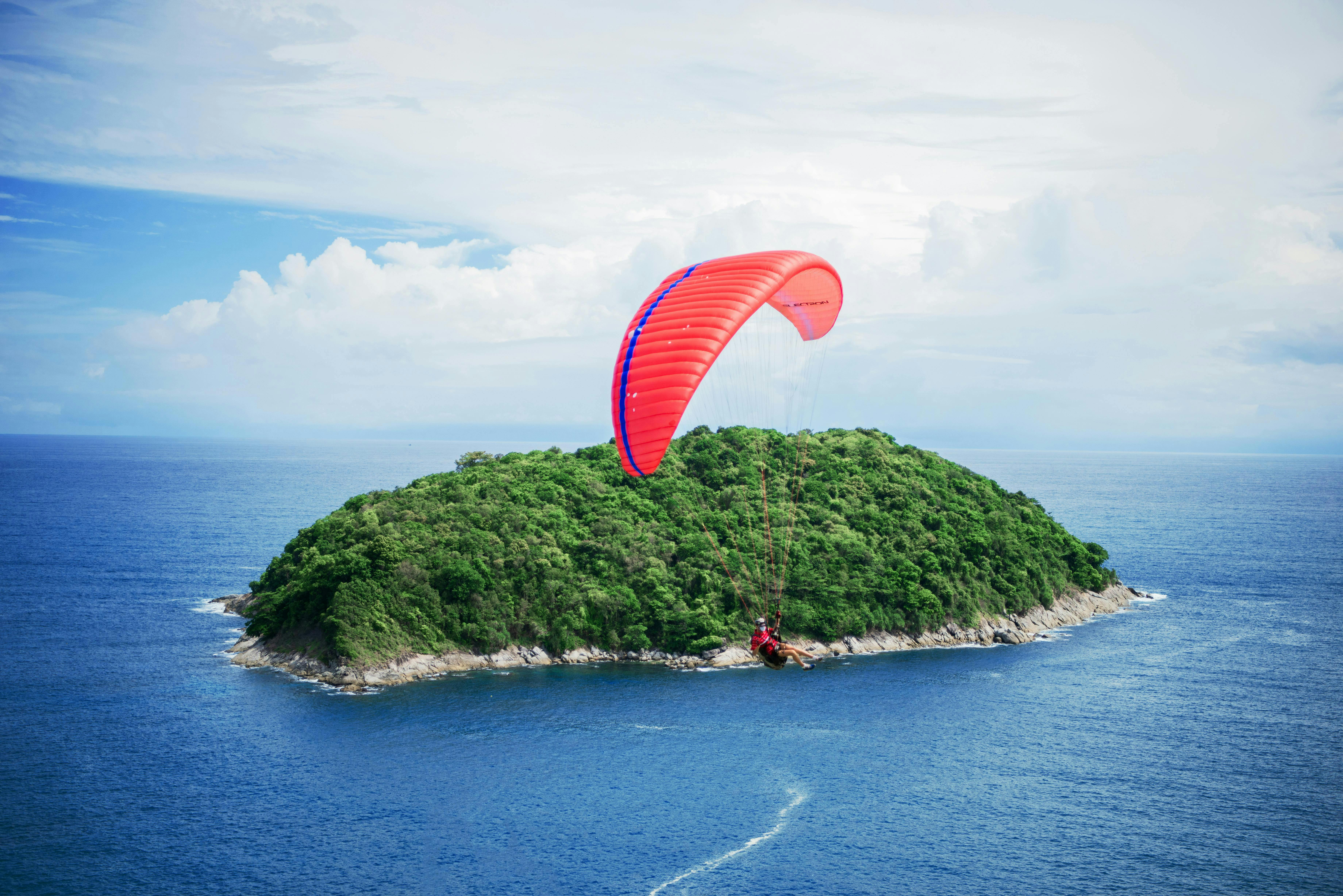Thailand Itinerary 5 Days

Is 5 days Enough for a Thailand Trip?
Going to Thailand for five days is good to see the top attractions, but there is much more to Thailand than that. Shortening the stay, one should choose one or two regions, for instance, Bangkok, to tour in the neighboring areas, for instance, Ayutthaya or Pattaya, or combine a tour in Phuket with traveling around the island of Phi Phi.
Some of the famous places within Thailand include dining and shopping in Bangkok, including the Grand Palace and its temples, enthralling markets and roads, free and easy on stunning beaches and beautiful islands, as well as watersports in the southern part of Thailand.
However, if you attempt to fit too much into the Thailand itinerary 5 days you will feel that the trip is insufficient for covering the desired number of tourist attractions and interests. One might want to savor it by targeting any area as opposed to covering the whole map in one go. If you could extend your 5 days itinerary in Thailand, you can also visit the less touristy attractions or go to completely different areas of Thailand such as Chiang Mai or Krabi.
Choose the Best Thailand Tour Packages, to Spend your 5 Fays in Thailand
5 Days Thailand Trip Cost
Thailand Trip cost for 5 days depends on the choices made by an individual. A backpacker may need $300-$500, a standard traveler will need $600-$1200 for spending during the trip. That is; luxury travelers are willing to spend more than $1,500 depending on the hotel bill, other activities, and meals.
Read This Guide to Calculate Your Thailand Trip Cost
Quick Facts About Thailand
Thailand is a beautiful country in Southeast Asia. It is known for its beaches, temples, and tasty food. Bangkok is the capital city and is full of tall buildings and busy markets. The official language is Thai, and the currency is Thai Baht. Thailand has many islands like Phuket and Koh Samui. The weather is mostly warm and humid. Tourists love visiting temples, floating markets, and elephant sanctuaries. Thai food, like Pad Thai and mango sticky rice, is very popular.
Let’s Create Your Customized Travel Itinerary at Free of Cost With Our - Ai Trip Planner
A Complete 5 Days Thailand Tour Itinerary
Day 1: Arrival in Bangkok
- Morning: Arrive in Bangkok, Thailand’s busy and exciting capital. Go to your hotel and check in. Hotels cost between $50-$150 per night. After a long journey, rest for a while to refresh yourself.
- Afternoon: Start your adventure by visiting the Grand Palace, a beautiful place where Thai kings once lived. Next, visit Wat Phra Kaew, the Temple of the Emerald Buddha, one of Thailand’s most important temples. Then, take a ferry across the river to Wat Arun, also called the Temple of Dawn. The temple is tall and decorated with colorful glass and ceramics.
- Evening: Head to Asiatique The Riverfront, a lively shopping and entertainment area by the river. Enjoy Thai street food like Pad Thai, mango sticky rice, and grilled satay. Watch a traditional puppet show, which is a fun way to learn about Thai culture. Enjoy the cool breeze and beautiful night views of Bangkok’s skyline.
- Transportation: You can take taxis, the BTS Skytrain, tuk-tuks, or ferries to move around the city. Tuk-tuks are fun, but remember to agree on a price before the ride!
Day 2: Exploring Bangkok
- Morning: Start your day at Chatuchak Market, one of the biggest markets in the world. It has more than 8,000 shops selling clothes, souvenirs, food, and more. Try delicious Thai snacks like coconut ice cream and crispy spring rolls while exploring. Bargaining is common, so try to get the best price!
- Afternoon: Visit the Jim Thompson House, a beautiful wooden house where you can learn about Thai silk and art. If you like modern art, go to the Bangkok Art & Culture Centre to see paintings, sculptures, and cool exhibitions. Both places show Thailand’s rich culture and history.
- Evening: Enjoy a fancy dinner at one of Bangkok’s rooftop bars like Vertigo or Sky Bar. These places offer delicious food and stunning city views from high up in the sky. If you prefer a relaxed evening, you can visit Khao San Road to see street performances and lively markets.
- Transportation: Use the BTS Skytrain for quick travel, or take Grab taxis for easy rides. Buses are also available but can be slow due to traffic.
Day 3: Day Trip to Ayutthaya
- Morning: Take a train or van from Bangkok to Ayutthaya, the ancient capital of Thailand. It takes around 1-2 hours to get there. Explore the Wat Mahathat temple, famous for a Buddha head inside a tree’s roots. Visit Wat Chaiwatthanaram, a beautiful temple with tall structures and peaceful surroundings.
- Afternoon: Have a traditional Thai lunch at a riverside restaurant while enjoying a cool breeze. Try local dishes like Tom Yum soup and fried river prawns. After lunch, take a boat ride around Ayutthaya’s temples. This gives you a different and relaxing way to see the ruins from the water.
- Evening: Return to Bangkok and rest at your hotel. You can explore a nearby night market to buy souvenirs, try street food, or just relax in your hotel room after a long day.
- Transportation: Trains and minivans are the best ways to travel to Ayutthaya. You can also rent a bicycle there to explore the ancient city at your own pace.
Day 4: Travel to Chiang Mai or Phuket
- Morning: Take a domestic flight from Bangkok to either Chiang Mai or Phuket. The flight takes 1-2 hours. Once you arrive, check into your hotel and rest.
- Afternoon: If you’re in Chiang Mai, explore the Old City Temples like Wat Chedi Luang and Wat Phra Singh. The temples are peaceful and full of history. If you’re in Phuket, relax at Patong Beach, one of the most popular beaches with soft sand and clear water. You can also visit the Big Buddha, a huge white statue on top of a hill with amazing views.
- Evening: In Chiang Mai, enjoy a Khantoke Dinner, a traditional Thai meal served on low tables with cultural dance performances. In Phuket, explore the nightlife at Bangla Road, which is full of music, clubs, and street performances.
- Transportation: Taxis, tuk-tuks, and local buses are available in both cities. Walking is also a great way to explore!
Day 5: Explore Chiang Mai or Phuket, Return to Bangkok
- Morning: If you’re in Chiang Mai, visit Doi Suthep Temple, located on a mountain with breathtaking views. You can also take a Thai Cooking Class to learn how to make famous dishes like Green Curry and Som Tam (papaya salad). If you’re in Phuket, take a boat trip to Phi Phi Islands or Phang Nga Bay, where you can see beautiful limestone cliffs and crystal-clear waters. This is the last day of your Thailand itinerary 5 days, return back with loads of beautiful memories.
- Afternoon: Have a relaxed lunch at a local café or restaurant. Try fresh seafood in Phuket or northern Thai dishes in Chiang Mai. You can also do some last-minute shopping at markets or malls.
- Evening: Take a flight back to Bangkok. If you have extra time before your international flight, explore Suvarnabhumi Airport’s duty-free shops or relax at an airport lounge. Fly back home with amazing memories of your Thailand trip!
- Transportation: Domestic flights take you back to Bangkok, and you can use airport taxis or the Airport Rail Link to reach the airport.
What is the Best Time to Plan Your 5 Days Thailand Trip?
Things to Know Before Travelling Thailand for 5 Days
Tourist SIM Cards
Easy to Purchase: It is possible to purchase one of the tourist SIM cards at the airport, and kiosks, mobile stores, and shops located nearby. AIS, DTAC, and TrueMove therefore describe common service providers.
Plans and Data: While selecting the plan, look at data and local calls so you do not run out of communication options on your vacation. Most of the SIM cards are packaged in 7 to 30 days validity, which may be good for short visits.
ID Requirement: You will be required to present your passport when purchasing a SIM card.
Cash vs ATMs
Cash is King: Although credit cards are accepted almost everywhere, especially in large cities and tourist areas, it is preferred nevertheless, to take some cash with you, especially to bazaars, shops, and rural districts.
ATMs: Banking machines are plenty in cities and towns, but be careful of your bank charges every time you use banking machines abroad. Locally owned ATMs may also charge patrons who wish to use the facilities.
Currency: The currency is Thai Baht. It is advisable to change some money before arriving since the rate in the country is generally good, but exchange offices can be found a plenty in the most visited places.
Useful Apps
- Grab: Crucial to make bookings for taxi services and food deliveries all across Thailand, like Uber.
- Google Maps: Ideal for choosing directions, restaurants, and points of interest.
- Currency Converter App: It is helpful to know the exchange rate from Thai Baht to your local currency and to help you set your budget.
- TripAdvisor or Google Reviews: Huge plus for restaurants, things to do, and people’s reviews and comments on places.
Accommodation Booking
- Booking Platforms: Social media platforms such as Facebook, Twitter, and Instagram as well as numerous travel websites including Booking.com, Agoda and Airbnb, are familiar for booking carriers, hotels, hostels, and residences.
- Location Matters: It would be best if one could be close to transit (BTS for Bangkok or beaches for Phuket).
- Pre-Booking: For tourist destinations (like Phuket or Koh Samui), always book your accommodation rather in advance, and if possible, do so during the high season (November to February).
- Budget Options: The ultimate Thai accommodation will therefore suit everyone from the budget traveler to the expensive tourist who is looking for the best Thai resort to spend their vacations in.
What to Wear in Your 5 Days Thailand Trip
For Temples
- Modest Clothing: It is wise that while attending the temples, one should dress conservatively since it’s dirty showing respect to the deities. Men must wear clothes that reach the knees, and women’s clothing should also be over their shoulders.
- Long Pants or Skirts: Guys should avoid shorts while ladies should avoid wearing short pants or skirts which are above the knees.
- Tops with Sleeves: Do not wear clothing such as sleeveless tops or even tank tops. Pick light-colored, loose-fitting shirts or short blouses with the collar not revealing cleavage.
- Comfortable Shoes: Shoes are also important since you will probably be doing a lot of walking. Sneakers and sandals are okay, however, do not wear shoes that are too relaxed or beach-type.
- Scarves/Shawls: Additional pieces and layers for women are useful to cover shoulders if needed, a scarf or shawl can come in handy.
Confuse about what to wear in Thailand, read about complete guide on: What to Wear in Thailand
At Beaches
- Swimwear: Accompany swimsuits, bikinis, or swim trunks for exercises such as sunbathing and swimming at the beach.
- Cover-up: A beach hajib or kaftan is ideal if you’re moving around the beach or going out to eat.
- Flip-Flops or Sandals: Easy-to-wear sandals are vital for use on the beach and other areas within the coastal line.
- Sunglasses & Hat: Wear some sunglasses to protect your eyes from the sun. Put on a wide-brimmed hat to keep cooler.
For Casual Wear
- Light and Breathable Clothing: Thailand is hot and humid so light-colored clothes made of cotton or linen should be worn.
- Comfortable Shoes: Flip-flops or sneakers are ideal footwear for walking around and doing some wondering.
- Shorts and T-shirts: Comfortable cycling and travel wear such as shorts and skirts as well as casual T-shirts are recommended.
For Nightlife and Entertainment
- Smart-Casual Attire: If you go to some fancy club or bar, then dress normally – collared shirts for men or good dress and appropriate shoes for women.
- Comfortable Yet Stylish Footwear: Flats or fashionable sandals made for women and formal footwear for men should be appropriate for most places you might attend.
- Light Jacket or Sweater: If you’re going indoors to buildings that are air-conditioned or out to bars in the evening, then you’ll probably want some form of top wear in the form of a light jacket or sweater.
Enjoy the: Nightlife in Pataya




